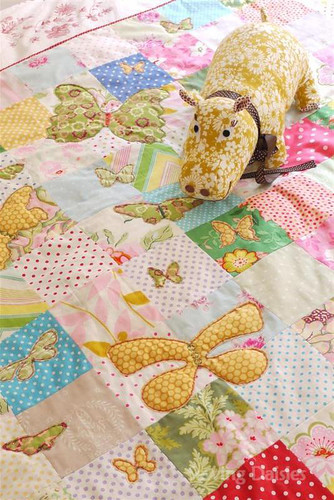
Image : http://www.flickr.com
When you first start sewing, it can seem like there are too many things you need to know. Whether you have a project in mind already or if you just want to learn to sew, it is hard to make a decision about what sort of sewing machine to buy. So, here are some things to help you make that decision.
Firstly, there are lots of things to consider when shopping for a sewing machine, but just a few of them are really important. The first thing you'll discover is that machines come in two categories: mechanical and computerized. Despite the name, mechanical models are electric and many have good features like a wide variety of stitches. However, they generally require you to control the variables available by hand and tend to cost less. Computerized machines allow you to choose your selections using a simple touch screen and control most functions through computer chips. Many computerized machines also have LED screens that display your settings and usually offer more features and stitch flexibility.
Mechanical Sewing Machines
When looking at mechanical models, the most important features you should look for are:
- the ability to alter your stitches
- sew in reverse
- ability to move the needle to the left and right.
Additionally, a machine that feeds the fabric through the machine smoothly without needing extra help from you and a reasonable selection of basic utility stitches are a must. This combination of features in a mechanical machine will give you a good machine to work with.
Computerized Sewing Machines
While mechanical models are a good choice for beginners and can easily deal with simple projects, the technology in sewing machines over the past decade has led to more sophisticated computerized machines. They offer more options and even the beginner will appreciate the automation they offer not to mention that they start at a very reasonable prices. Most computerized models have a needle up/down mode that allows you to stop at any point to adjust your fabric without skipping a single stitch. They also have more extensive stitch packages, so you can grow with your machine. As a beginner you may only use a few simple stitches, but as you start more complex projects, you'll have the option of using more decorative stitch patterns and some of the other automatic feature such as automatic buttonholing.
It's important to choose a machine that will be able to accommodate your growing imagination. It depends on what you intend to do with your machine. Perhaps making clothes for the family, quilting or just functional repairs. As you are introduced to even more advanced machines, you may want to consider how using embellishments, like embroidery designs for instance, could add more to your projects. If this is likely, keep it in mind when buying the machine - you should make sure the machine you purchase will be able to adapt and grow with you.
With so many fantastic features available on sewing machines today, it is important to remember not to sacrifice quality for features you are unlikely to need. Cheaper machines that claim to 'have it all' and hundreds of stitches as well may seem to good to be true. Often this is the case and you get what you pay for, so, yes, lots of stitches are great, but they won't be much good if the machine quality is questionable. Use simplicity and flexibility as your guides. Look for the features discussed above, such as a needle that can be moved left and right, and the up/down function. They will help you the most to reach your goal of a well-executed project. Other must-have features include adjustable stitch width and length, and an automatic needle threader to make set-up easier than ever.
Which Brands
Brands such as Bernina, Pfaff and Janome to name but a few have a reputation for quality and reliability, but do your research first and if possible try out machines locally. Lastly, make sure you buy your machine from someone you can trust. It's easy to walk into a superstore and select a machine to buy. But what happens when something goes wrong? Can you easily return the machine and how are you going to deal with repairs. Look for a place that offers you advice on how to use your machine, project ideas and perhaps classes or tips.
In Conclusion
Do your homework. Decide what you want to do with your machine and decide on a price range. Do your research, visit forums online, check out what other people have to say and always keep in mind what features you must have in a machine.
Jan Barker is an arts and crafts devotee. She won her first painting competition at the age of 5 and continued to win well into her teens. Knitting started at 6 years and sewing a couple of years later. Lately, her realms of interest have stretched over to creating digital arts and she is always looking at ways to combine these skills. Jan is happy to share her knowledge and skills including finding the best sewing machine to use for your projects. See what Jan has to offer at http://bestsewingmachines.co and then let her know what you want to know about.

ไม่มีความคิดเห็น:
แสดงความคิดเห็น